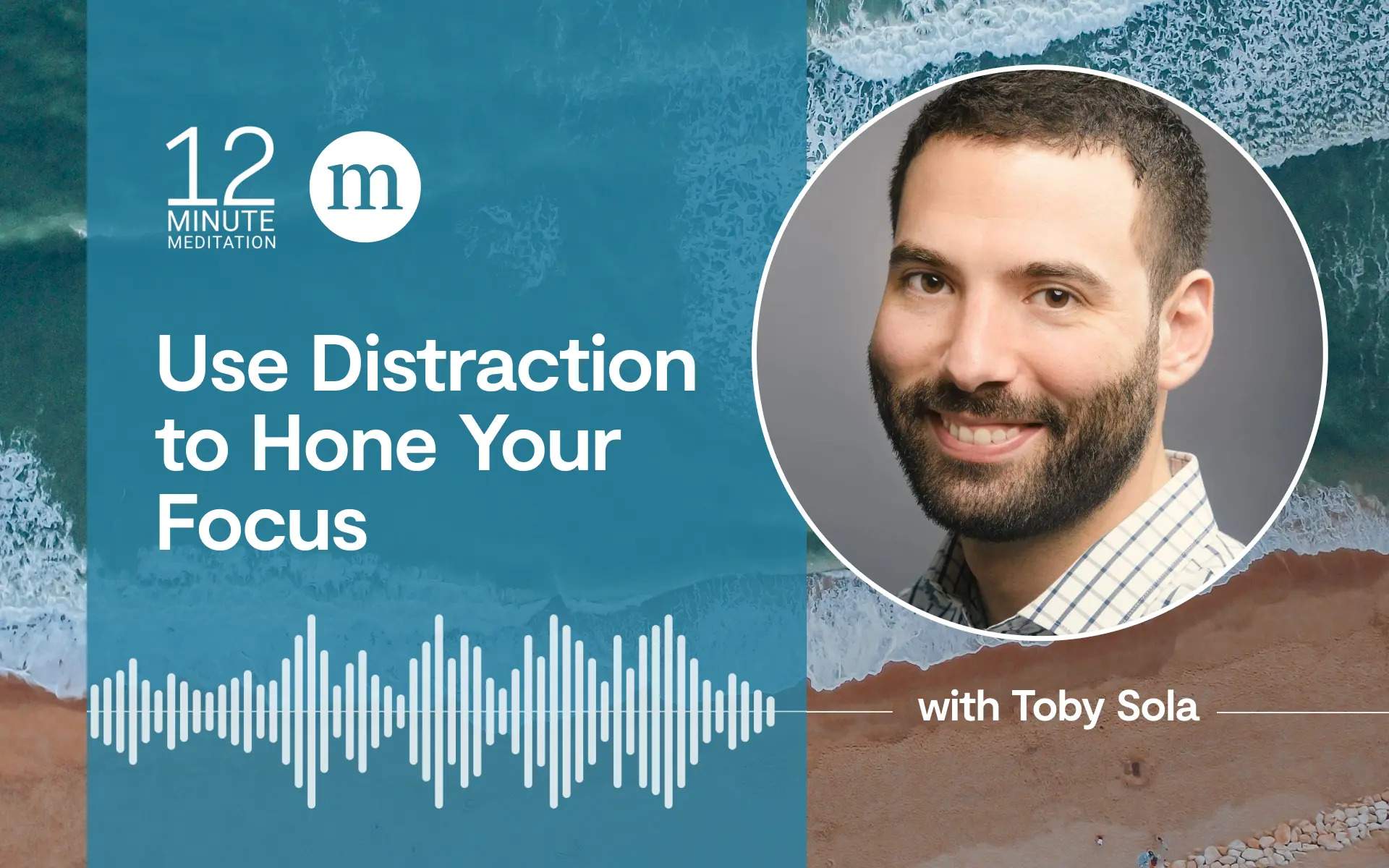In this week’s guided meditation, mindfulness teacher and designer Toby Sola shows us how we can use what distracts us to strengthen and sharpen our attention.
It might seem counter-intuitive, but intentionally tuning in to what’s distracting you can actually help strengthen your ability to focus.
In today’s guided practice, meditation teacher Toby Sola introduces what he calls a “concentration algorithm.” This practice will help you identify which type of sensory experience you are naturally drawn to, and then give you a structure for how to focus on it, so that you can quickly attain deep concentration.
Note that this meditation includes long pauses of complete silence as part of the practice. If you want more time, feel free to pause the recording as you go.
Use Distraction to Hone Your Focus
Read and practice the guided meditation script below, pausing after each paragraph. Or listen to the audio practice.
- In this meditation, we’ll explore what I like to call the “concentration algorithm.” Take a moment to stretch up and settle in. You can practice today’s meditation with your eyes open or closed. Bring your attention to the breath. No need to breathe in a specific way, just breathe at a natural pace. Notice air coming in and out of your nose. Notice your chest and belly expanding and contracting. If your attention wanders to thoughts, sounds, or other experiences, that’s fine. Allow the distractions to come and go in the background of your awareness. Then, gently bring your attention back to the breath.
- Now take a moment to check in. What have you been most distracted by? Was your neighbor mowing the lawn, and you were distracted by the sound of the mower? Or were you distracted by thoughts? This doesn’t have to be exact, just take a guess.
- Which of the following categories best describes what was distracting you the most? If you had to guess, what were you most distracted by? What category does that fall into? The options are: sight, sound, physical body sensation other than the breath, mental image, mental talk, and emotional body sensation.
- Now let’s switch techniques. For the next little bit, focus on whatever was distracting you the most. For example, if you were distracted by sounds in your environment, focus on the sounds. Or if you’re distracted by bursts of mental talk, listen to those carefully.
- Sometimes, an experience might end when we go to focus on it. For example, you focus on the sound of your neighbor mowing their lawn, but then they turn off the mower. This is very common with mental images and mental talk, as well. We may notice bursts of mental talk or flashes of mental images, but when we try to focus on them, they scurry away, like mice when a cat enters the room.
- Here is a tried and true trick of the meditation trade: If an experience ends when you go to focus on it, that’s fine. Just focus on the corresponding restful state. For example, if a sound disappears, focus on silence. If mental talk disappears, just focus on mental quiet. If mental images disappear, focus on a blank mental screen. If you remember that you can always focus on the corresponding restful state, then you’ll always have something to hone your focus on. Keep this in mind as you continue to focus on whatever was distracting you from the breath.
- Let’s check in once more. Since switching techniques, what have you been most distracted by? Remember, you can choose from sound, physical body sensation, mental talk, mental image, or emotional body sensation.
- Let’s switch techniques one last time. Focus on whatever was distracting you the most. And if it stops, just focus on the corresponding restful state. For example, focus on emotions in the body, unless they stop, in which case you’d focus on emotional peace. Or focus on your mental talk, unless it stops, in which case, you focus on the mental quiet.
- Before we wrap up, take a moment to reflect. We focused on a few things today. What was the easiest to focus on? There’s no right or wrong answer, we’re just exploring and getting to know our minds. Whatever was the easiest to focus on, remember that, and hone your focus on that next time you meditate.
- This is how the concentration algorithm works. It helps us discover which type of sensory experience we are naturally drawn toward, and then gives us a structure for how to focus on it, so that we can quickly attain deep concentration.











Leave a Reply